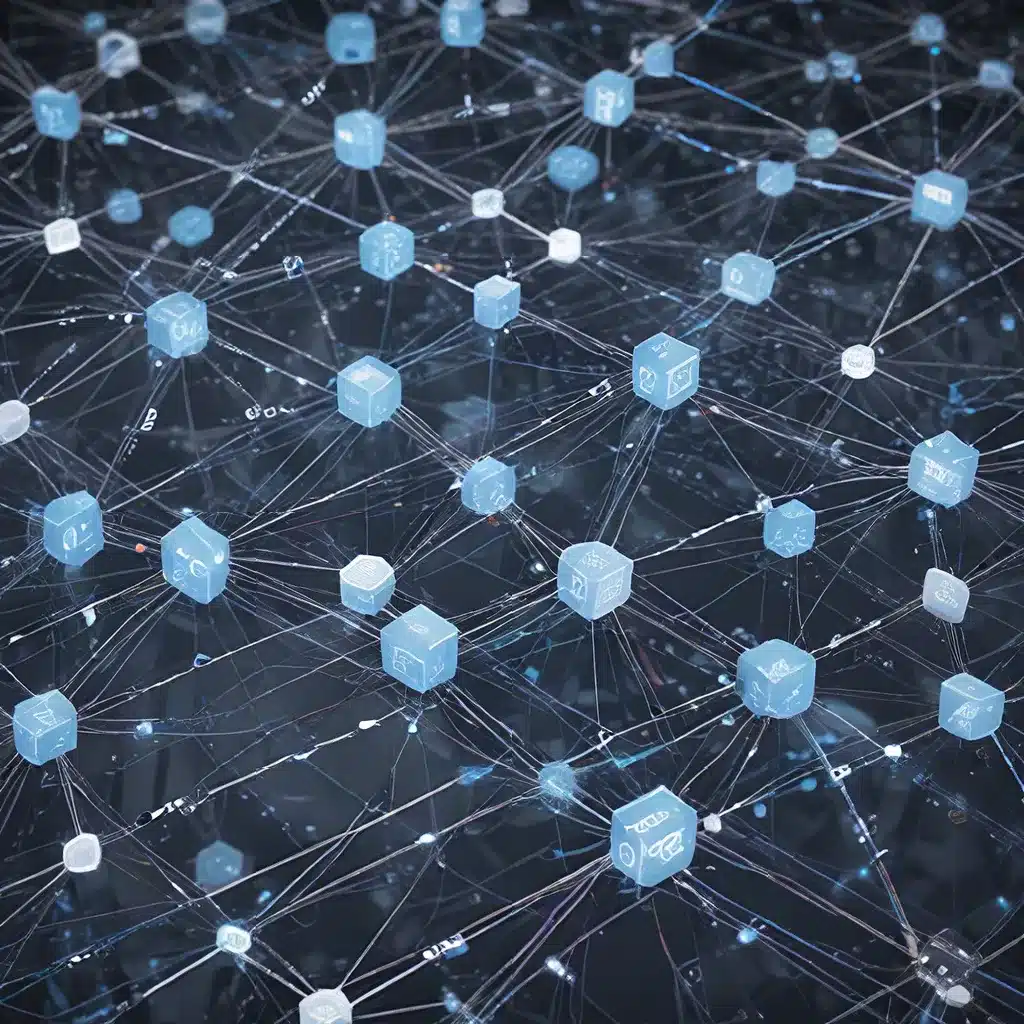
In the rapidly evolving world of the Internet of Things (IoT), the design and deployment of sensor networks have become increasingly crucial. As the number of connected devices continues to grow exponentially, ensuring the accuracy, scalability, and resilience of these sensor networks has emerged as a paramount concern. Enter distributed sensor calibration algorithms, a groundbreaking approach that is poised to revolutionize the way we conceptualize and construct IoT ecosystems.
The Challenges of Sensor Network Deployment
The proliferation of IoT applications, from smart cities and industrial automation to environmental monitoring and healthcare, has led to the deployment of vast networks of sensors. These sensors are responsible for collecting and transmitting a wealth of data, which is then processed and analyzed to drive data-driven decision-making. However, the sheer scale and complexity of these sensor networks pose significant challenges.
One of the primary hurdles is sensor calibration. Sensors, by their very nature, are susceptible to drift, drift, and environmental interference, which can lead to inaccurate measurements and ultimately unreliable data. Traditional calibration methods, which often involve manual intervention or centralized calibration processes, quickly become impractical and inefficient as the number of sensors scales up.
Enter Distributed Sensor Calibration Algorithms
This is where distributed sensor calibration algorithms come into play. These innovative techniques leverage the interconnectedness of IoT networks to enable decentralized, automated, and scalable calibration processes. By harnessing the computational power and communication capabilities of individual sensors, these algorithms can continuously monitor, adjust, and maintain the accuracy of sensor data across the entire network.
Understanding the Mechanics of Distributed Calibration
At the core of distributed sensor calibration algorithms is the concept of sensor coordination. Sensors within the network communicate with their neighbors, exchanging information about their calibration states and measurement data. This peer-to-peer interaction allows sensors to collectively identify and correct any discrepancies or anomalies, ensuring that the overall network remains accurately calibrated.
One of the key advantages of this approach is its resilience. Unlike centralized calibration methods, which rely on a single point of failure, distributed algorithms are inherently fault-tolerant. If one or more sensors within the network malfunction or become compromised, the remaining sensors can adaptively adjust their calibration to maintain the overall accuracy of the system.
Optimizing Energy Efficiency and Security
In addition to accuracy and resilience, distributed sensor calibration algorithms also address critical concerns around energy efficiency and security.
Energy efficiency is a paramount consideration in IoT deployments, as sensors are often powered by limited battery resources or energy-harvesting mechanisms. Distributed calibration algorithms are designed to minimize the energy consumption associated with the calibration process, ensuring that sensors can operate for extended periods without the need for frequent battery replacements or recharging.
Security is another crucial aspect of IoT networks, as the interconnectedness of these systems makes them vulnerable to various cyber threats. Distributed sensor calibration algorithms incorporate robust security measures, such as encryption, authentication, and secure communication protocols, to protect the integrity of sensor data and prevent unauthorized access or tampering.
IoT Applications Empowered by Distributed Calibration
The impact of distributed sensor calibration algorithms extends across a wide range of IoT applications, each with its unique challenges and requirements.
Smart Cities and Infrastructure Monitoring
Smart cities rely on extensive sensor networks to monitor traffic patterns, environmental conditions, and public infrastructure. Distributed calibration algorithms enable these sensor networks to adapt and self-correct in response to changing environmental factors, ensuring reliable data for optimized urban planning and efficient resource management.
Industrial Automation and Process Control
In the industrial domain, sensor networks play a crucial role in process control, predictive maintenance, and quality assurance. Distributed calibration algorithms help maintain the accuracy and reliability of these sensors, enabling real-time monitoring, fault detection, and optimization of industrial processes.
Environmental Monitoring and Precision Agriculture
Environmental monitoring and precision agriculture rely on sensor networks to track soil moisture, air quality, weather patterns, and other environmental variables. Distributed calibration algorithms ensure that these sensors continuously provide accurate and dependable data, supporting sustainable land management, crop optimization, and environmental conservation efforts.
Healthcare and Biomedical Applications
In the healthcare and biomedical domains, sensor networks are used for remote patient monitoring, disease management, and rehabilitation. Distributed calibration algorithms help maintain the integrity and reliability of these sensors, enabling personalized and data-driven healthcare solutions that improve patient outcomes and quality of life.
The Future of Sensor Networks: Scalable, Resilient, and Secure
As the IoT landscape continues to evolve, the role of distributed sensor calibration algorithms becomes increasingly vital. These innovative techniques are paving the way for scalable, resilient, and secure sensor networks that can adapt to the ever-changing demands of the digital age.
By empowering sensors with the ability to self-calibrate and collaborate, distributed algorithms are revolutionizing the way we design, deploy, and maintain IoT ecosystems. As the interconnectedness of our world grows stronger, these advancements in sensor network technology will undoubtedly play a crucial role in shaping the future of the Internet of Things.
Explore the sensor-networks.org website to delve deeper into the cutting-edge developments and real-world applications of distributed sensor calibration algorithms and other transformative IoT technologies.